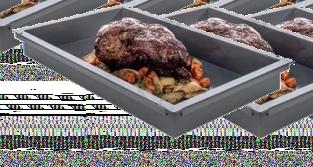
21 minute read
COVER STORY
Life is Yummy
… with Desserts
Advertisement
Be it chocolates or cakes, sweets are always a favourite with people of all ages. Sweets have been a weakness with people from primordial days. A fondness for sweets is what endears desserts to the populace. If one looks at it scientifically, one finds that it was probably a fondness for sweets that gave people, in history, the energy and, possibly, saved their lives. Being able to taste sweetness might have helped our ancestors to identify energy rich food, which played a critical part in their survival. This fondness for sweets is what makes desserts an obsession with people. Ashok Malkani examines the love for desserts and analyses the modern concept of them being harmful to your health. He also looks at the trends during the New Year.
The quintessential day dedicated to lovers (Valentine’s Day) is almost here. Celebrated with roses, chocolates and sweets it is the day that endears you to your sweetheart, when you offer her sweets with the message: Sweets for a sweet!
Sweets are a weakness with several people. When it comes to sweets, the maxim followed by almost everyone is: Never say Never. No wonder desserts are extremely popular with all age groups. No wonder Ernestine Ulmer said “Life is uncertain. Eat dessert first.”
Desserts make you feel relaxed. After all stressed is desserts spelled backwards! No wonder even during the corona virus it is found that people are busy baking sweet dishes. Almost all agree that a meal is incomplete without dessert.
Asif Iqbal, Executive Chef, Holiday Inn Chennai OMR IT Expressway, states, “A meal is never complete without a dessert so, a Chef’s service is never complete without serving it. Most of the guests who are on diet have options in plenty for some sugar free & jaggery based desserts. So, it does become an important part of the meal.”
Anirudh Amin, Chef de Cuisine, Four Seasons Hotel Bengaluru at Embassy ONE, asserts, “Desserts have always been an important part of the meal for guests as well as general public in various cultures. The urge to end the meal with a dessert has been the norm for ages. One also cannot discount the influence of social media in our lives and there is no better example of an instagrammable food item than a dessert. “
Rajat Sachdeva, Pastry Chef – Sofitel Mumbai BKC, declares, “Desserts are not only becoming more and more popular as part of the meal, but I feel they are also the most important part of a person’s meal as a feelgood factor to make life sweeter and happier. Sweet snacks increase our production of the so-called hormone of happiness and their presence on the menu makes us feel satisfied after a meal. The desire to improve your mood by ingesting sugar can also be a positive factor that leads to making a person feel happy and content.”
Mayur Ramachandran, Executive Chef, Holiday Inn Bengaluru Racecourse, avers, “Desserts have always been an integral part of everyday meals. Right from maintaining its first placement on a Plantain leaf to being the showcase on 16th Century French Dinner tables, they have always been integral to custom, traditions and also to display pomp and grandeur. Before sugar became easily available to masses, honey and jaggery were used in abundance to sweeten food products. No meal is complete without its share of sweet.”
History
A meal is considered to be incomplete without a dessert. But it may be mentioned that, according to food historians Deborah Krohn and Yotam Ottolenghi, the present day desserts have existed since the seventeenth century.
But sweets were fed to gods in Mesopotamia and ancient India and other ancient civilizations much before that.
The word dessert originated from the French word desservir, which means “to clear the table”. Its first known use was in 1600.
Mayur maintains, “Early Sanskrit text dating back to 550 CE have mentioned the used of “Sakkara” for rituals . Even Deities have had favourites, with Lord Ganesha being fond of Modak , Lord Hanuman fond of Laddoos and Lord Krishna fond of Kheer. The mentions of sweets in our culture have been innumerable. Ayurveda texts have shown the association of consuming sweets with maintaining a healthy energy balance in the body.”
He adds. “Desserts/Mithai/Sweets have been mentioned in some of the earliest books known to man. Charaka Samhita (Dated around 100BCE to 200 BCE) speaks about the importance of diet and nutrition and also the role of sweets in them. They have been intertwined in our lives to such an extent that one can’t really lay a finger on how the desserts/sweets began in India.”
Asif states, “Sugarcane has been grown in the Indian subcontinent for thousands of years, and the art of refining sugar was invented there 8000 years ago (6000 BCE) by the Indus Valley Civilisation. The English word “sugar” comes from a Sanskrit word Sharkara for the refined sugar, while the word “candy” comes from Sanskrit word khaanda for the unrefined sugar– one of the simplest raw forms of sweet. Over its long history, cuisines of the Indian subcontinent developed a diverse array of sweets. Some claim there is no other region in the world where sweets are so varied, so numerous, or so invested with meaning as the Indian subcontinent.”
He adds, “Mithai (sweets) are the confectionery and desserts of the Indian subcontinent. Thousands of dedicated shops in India sell nothing but sweets.”
Anirudh disclosed, “Sushruta Samhita which is a Sanskrit text on medicine and surgery mentions records about sugar being produced from mahua flowers, barley and honey. Sugar-based foods were also used in temple offerings as bhoga or prasadam for the deities which, after the prayers, became a holy offering for devotees and visitors to the temple.
“The custom of sweets in the Indian subcontinent has been traced to at least 500 BCE when, records suggest, both raw sugar and refined sugar were being produced. By the Gupta dynasty era (300–500 CE), sugar was being made not only from sugar cane, but from other plant sources such as palm with official documents of acknowledging five kinds of sugar.”


Mayur Ramachandran

Rajat Sachdeva

Asif Iqbal
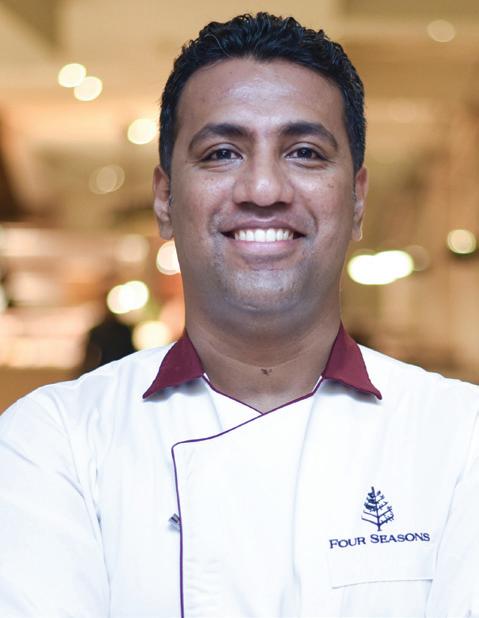
Anirudh Amin
Rajat reveals, “Sweets were fed to the Gods in ancient Mesopotamia and ancient India and other ancient civilizations. Dried fruits and honey were probably the first sweeteners used in most parts of the world, but the spread of sugarcane around the world was essential to the development of dessert. In certain parts of India, these are called “Mithai” or sweets. Sugar and desserts have a long history in India, wherein by about 500 BC, people in India had developed the technology to produce sugar crystals. In the local language, these crystals were called “Khanda”, which is the source of the word candy.
Health Consciousness
Desserts are, at their core, an indulgence. With health consciousness on the rise there seems to be hesitation on the part of diners to partake in this course during the meals. Some are of the belief that deserts should be had before the meals not at the end of the meal. This has added a unique spin to this delicacy.
Would health consciousness decrease demand for desserts?
Asif is of the view that taking a few bites of dessert before eating your vegetables helps you absorb vitamins and nutrients better – and that’s a good thing when it comes to your health. The other advantage of eating dessert first is it delays gastric emptying. This causes you to feel fuller quicker – so you’ll eat less.”
“But,” he adds, “It is not so common amongst all yet since they follow tradition of meal with their courses.”
He continues, “As far as health consciousness affecting the consumption of desserts is concerned, sugar is had in different formats at all times. Open a soft drink and you have consumed sugar! It doesn’t take an expert to see that our modern sugar intake is more than it was in our foraging days. And so far, scientists have had a difficult time proving how it affects our health, independent of a diet too high in calories. A review of research conducted over the last five years summarised that a diet of more than 150g of fructose per day reduces insulin sensitivity – and therefore increases the risk of developing health problems like high blood pressure and cholesterol levels. But the researchers also concluded that this occurs most often when high sugar intake is combined with excess calories, and that the effects on health are “more likely” due to sugar intake increasing the chance of excess calories, not the impact of sugar alone.
“Meanwhile, there is also a growing argument that demonising a single food is dangerous – and causes confusion that risks us cutting out vital foods.”
Mayur maintains, “Sugar/Sweet is associated with maintaining a healthy metabolic activity in the body. In our tradition, we’ve always started with a kheer/Payasa on the plantain leaf and then made our way towards the more savory items. The sweet taste acts quickly on the taste buds and activates the brain cells to release more saliva. Eating the sweet item first enables the flow of digestive secretions.
“I think, consumption of desserts won’t go down, but the form of desserts will change. The healthy population is slowly moving towards more natural form of sweeteners like stevia, dates and honey and avoiding refined forms of sugar. People are becoming more conscious of what goes into their body and how it affects them. I am in no way attempting to say sugar is bad, but too much of anything is definitely not good for one’s body.”
Anirudh avers, “As per Ayurveda having sweet right at the start of your meal is said to activate the taste buds. Having them right at the end can put off the digestive process. It may cause fermentation and indigestion due to the acidic secretions. This could also trigger gas formation and bloating. To counter these effects, Ayurveda suggests that one must start with something sweet at the outset, followed by something sour and salty in the middle, and finally something spicy or astringent. Having spicy food in the end helps douse the Kapha dosh (earth), while something sugary at the start takes care of the Vayu (wind) imbalance. This Concept has still not caught on fully as the general mind-set of Indian eating habit is to have the dessert after the main meal. However, in recent times people have become more mindful about their health and therefore have begun to relook into their eating habits aided through scientific research and also referring to the age old Ayurvedic practices to influence or rather redefine their eating habits.”
He adds, “With people becoming health conscious, the trend of dessert consumption has shifted focus from the refined sugar to more healthy alternatives like Honey, Palm Jaggery, Dates, Coconut Sugar and Maple.”
Rajat is also of a similar view. He says, “Taking a few bites of dessert before eating your vegetables helps you absorb vitamins and nutrients better – and that’s a good






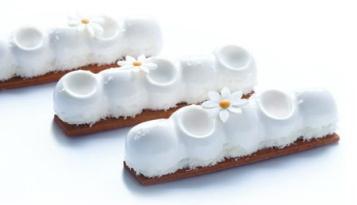
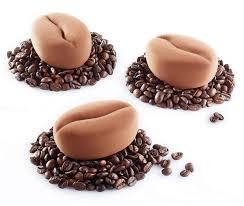

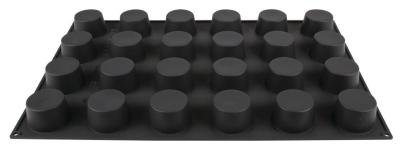
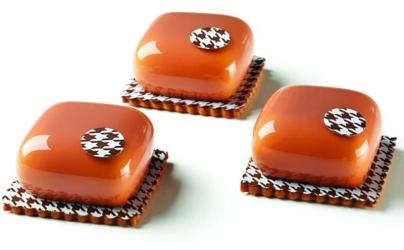


India Distributor & Stockiest for :
thing when it comes to your health. The other advantage of eating dessert first is it delays gastric emptying.”
He continues, “Eating unhealthy ingredients can cause weight gain. Rates of obesity are rising worldwide and added sugar, especially from sugar-sweetened beverages is thought to be one of the main culprits. High-sugar diets have been associated with an increased risk of many diseases and have also been linked to acne, diabetes and heart diseases. Foods high in added sugar quickly spike blood sugar and insulin levels, leading to increased energy. Hence chefs and the dessert industry are more focussed on healthy products that are sweet and enjoyable to eat, and yet sugar-free/glutenfree/vegan/low calories, etc. that make life healthy to save the consumer from various diseases.”
Modern Belief
Almost everyone believes that desserts are harmful to health. Read any fitness or health magazine and you are bombarded with facts about why sugar is bad, or the only way to live a healthy lifestyle requires cutting out dessert.
But if you have a sweet tooth, like this writer, you would realize that life wouldn’t be the same without desserts. But don’t be dismayed, there is hope for dessert lovers everywhere. Contrary to popular belief, desserts can have certain health benefits.
Rajat, reveals, “There are numerous reasons why you should have desserts. They are: • Desserts like pancakes are good for breakfast. Believe it or not eating desserts for breakfast could also help non-diabetic obese people lower their weight • Consuming products such as a little bit of dark chocolate everyday can actually help reduce the risk of a stroke in the long run, as well as reduce your blood pressure • Most importantly, it makes life more enjoyable, as eating desserts immediately puts you in a Good Mood, which makes your day go better and, in turn, makes you healthy, as it also makes you a happier person and a better human being.”
Mayur maintains, “All foods are to be eaten in moderation. Desserts and sweets provide positive energy to an individual and are associated with the release of happy hormones (Serotonin and oxytocin). A balanced intake leaves you positive, energetic and satiated. “
Asif asserts, “Desserts lower stress. As stress is one of the greatest hidden barriers to good health, desserts would thus add to your overall well-being.”
Trends for 2021
The year 2020 was considered to be bad in almost every aspect. However, for people who love to cook and bake, it was a year that offered them an opportunity of a lifetime as they could indulge in cooking to their hearts’ content. As we enter 2021, Bailey’s Treat Report, compiled by Baileys with leading food futurologist, Dr. Morgsan Gaye and several global treat makers and lovers, predict that 2021 will be a memorable year or those with a sweet tooth.
Rajat is cautious in his comments. He states, “According to me, the way consumers will eat and drink in 2021, doesn’t quite seem the same as before. The global Coronavirus pandemic has had a profound impact on F&B trend predictions heading into 2021, as people nowadays prefer to cook and eat at home. While the year 2020 has been all about elaborate flavours and fusion desserts, the upcoming year is sure to see some of the healthier ingredients being carried forward.
“The current trend is more about showcasing originality with well-established flavours and products. One such flavour that is taking the dessert and bakery industry by storm and has gained much popularity is burnt butter. Apart from this, the other big flavours include those that syndicate traditional sweets along with savoury in order to play with our taste buds. For instance, Ashwagandha Chocolates, Chocolate Cupcakes with fresh Mint Buttercream, Lemon and Rosemary Drizzle Cake, Ginger and Turmeric-infused Cookies, Cinnamon Oatmeal Ice Cream, Green Tea Frozen Yogurt, or Scones filled with Cardamom-infused Cream.
“Savoury desserts are the next sensation. Sesame Macarons, Black Pepper Ice Cream, Chocolate Chili Pies, Salted Caramel, Tabasco Lava Cake and flavours like Guava Chilli in ice creams and popsicles have been appreciated and relished.
“The traditional botanical and floral flavours such as elderflower, violet and lavender, basil, bergamot, clementine, rose and hibiscus are also being seen in a variety of products. In the subsequent years, these will be seen incorporated in cakes and other bakes. Examples include Clementine Cupcakes with a Basil Ganache or a Pistachio Cake with Rose and Hibiscus Syrup.”
Anirudh avers “The Pandemic has brought into focus healthy ingredients and food to strengthen the body immune system and food recipes being created around these ingredients. It could also set a trend of opting for healthy alternatives to sugar, in coming times. Since Locavores are on the rise, there is a pride of place for seasonal, local and foraged ingredients making their way into recipes to promote sustainability and freshness. There has been an emergence of Vegan Desserts. Beautiful looking desserts are in today’s terms “Instaworthy”. People have observed a slant towards artisanal desserts, since home chefs and bakers have been on the rise, especially during the pandemic.”
Mayur maintains, “With a complete lockdown in 2020 and people’s movement restricted and lower activity levels, a lot of people have been impacted health wise. Lot of people will move towards the usage of natural and organic materials to regain their earlier forms and shapes. Chickpea flour and Carob are touted as the next big things. Use of natural sweeteners like Allulose and Stevia will see a sharp rise. There will be a rise of a lot of interesting combinations of bitter and spice paired with chocolate. Focus will remain on providing a refreshing take on age old concepts.”
Asif asserts, “Taking into consideration that modern-day consumers are prioritising their well-being, bakery and gourmet industry has been experimenting with wholesome flavours and ingredients, alongside turning to functional or plant-based foods and twists on classic products to avoid menu fatigue. With consumers keen on replicating restaurant experiences at home, one can expect to witness more wholesome gourmet condiments, cooking sauces and cocktail mixes. For instance, ashwagandha, smoked watermelon and maple sauce, sea salt and frozen yogurts.”
He adds, “According to me the trends shaping the province of deserts and sweet savouries for 2021 will be as follows:
Age-old ingredients like Kuttu, Amaranth, Nachni and Bajra flour, will double up in usage in the upcoming years. Seaweed and ashwagandha are also finding an increased usage in the dessert industry alongside probiotics with gut augmenting properties which have created a space for themselves. Gluten-free options in traditional breads, pastas and gluten-free flours like buckwheat, rice flour, tapioca and almond flour are finding their way into the making of bakery products and desserts. Dairy-free cheese will witness an increase in demand and plant-based proteins will continue to advance in the market.
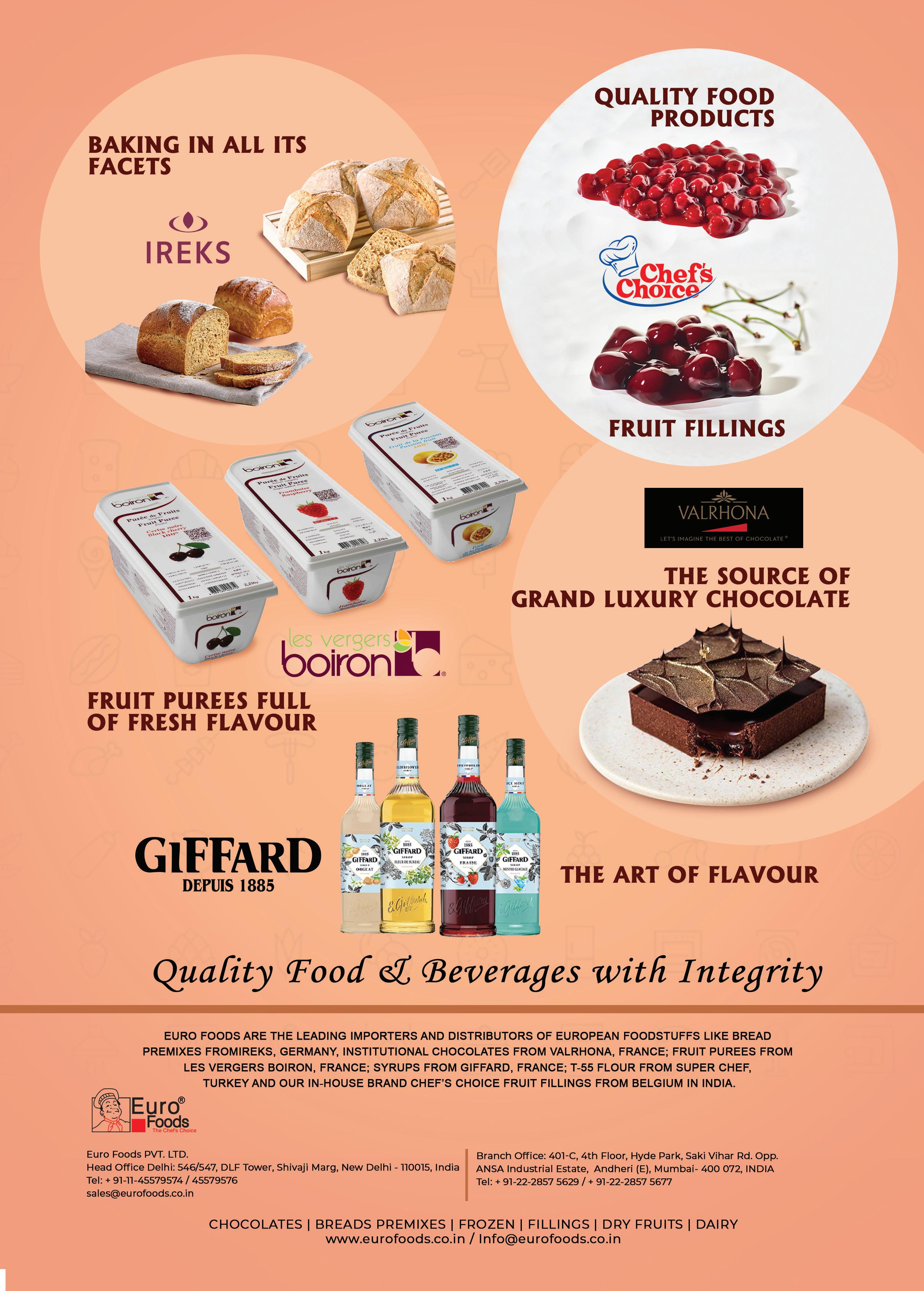
Vegetable-infused wholesome desserts are also taking the industry by storm, for instance, delectable desserts like carrot kheer, beetroot pastry and green peas kheer are savoury trends worth rooting for.
Asian flavours particularly Japanese, lend bakers the prospect to try some unusual flavours, for instance, wholesome bakes like Japanese black vinegar cupcakes filled with yuzu curd or apricot and wasabi muffins are trending. Some new additions that will be seen dominating menus are Japanese mochi, Pandan crème Brulee to a matcha Japanese cotton cheesecake.
The pandemic having made us spend most of the time being confined at home, it is expected that consumers will seek traditional comfort foods that will satisfy their taste buds lending a feeling of home. This trend will peak in subsequent years. Indian sweets inspired desserts like Motichoor Ladoo cake jar, Ras malai cake, barfi cupcakes, Jalebi crème Brulee, Kala Jamun chocolate truffles, white chocolate parfait, RabdiPanna Cotta, and more will be seen ruling the menu. This trend is all about taking classic flavours to a new level by adding small twists to recipes to provide something diverse. For instance, in the case of salted caramel, experimenting with various savoury takes or twists to the ingredients is an exceptional route to take. Getting experimental with salted caramel could be in the form of an added flavour in an indulgent bake with a diversified format like a Salted Caramel Brownie Pie or Salted Caramel Frangipane Pear Tart. This ingredient can also be added to bakes with coffee flavours or can be paired with honeycomb to lend a finishing touch.”
Recipes
Gluten-Free Hazelnut Magnum Ingredients For sponge
Sugar Water Unsalted butter 75% Dark chocolate Whole eggs Egg yolks Salt For Cocoa Mixture (to dip the Sponge) Cocoa butter Milk chocolate Roasted hazel nuts 292 gms 180 ml 288 gms 432 gms 5 nos 2 nos To taste
150 gms 500 gms 100 gms
Method
To make Cocoa Mixture: Melt Cocoa Butter and Milk Chocolate in a bowl. Crush the roasted Hazelnuts and add to this mixture
To make the Sponge: Heat sugar and water together in a pan. To this, add melted unsalted butter and melted 70% dark chocolate. Now mix the egg yolks first and then add the whole eggs. Take all the ingredients that are now mixed together and pour in a pan that is lightly greased with butter or oil to avoid sticking. Pre-heat your oven to 150 degrees Celsius and place the above mixture in the oven for 1 hour. Below the dish, place a pan of water to provide steam while baking. Once the sponge is done, cut into desired shape and coat it with the Cocoa Mixture before serving.
Rajat Sachdeva, Pastry Chef – Sofitel Mumbai BKC
Saffron Rice Panna Cotta, Pistachio Coconut Ice Cream, Rose Brittles Ingredients
Cooking cream 200grms Milk 50ml Sugar 40grms Gelatine 6grms Rice flour 6grms Saffron Pistachio Rose petals Isomolt sugar 1 pinch 10grms 4pcs 100grms
Method
Saffron rice pudding pannacotta: Warm cream, milk and castor sugar together once sugar melt add rice powder and saffron and mix well, cool it and put it in mould and keep in refrigerator.
Pistachio coconut cream: Take fresh coconut milk, add little coconut powder and castor sugar, simmer till ingredient mix well ,add pistachio powder and cool it.
Rose brittles:Take a pan and add isomolt sugar, rose water and cream, melt it till it reached to 140 degree Celsius add fresh rose petals mix and spread on silicon mat.. let it cool Plating: Take a plate, de-mould saffron rice pudding pannacotta and keep in center of plate, pour coconut cream around as shown in picture, sprinkle rose brittles and pistachio crushed and garnish with gold berk
Asif Iqbal, Executive Chef, Holiday Inn Chennai OMR IT Expressway
Almond Berry Tart Ingredients For Sweet Dough
Butter Unsalted Castor sugar Refined flour Whole egg
1.2 Kg 0.650 kg 1.850 kg 0.2 kg Vanilla paste 0.005 kg For Almond Cream Butter Unsalted 0.4 kg Castor sugar 0.320 kg Whole egg 0.160kg Almond powder 0.320 kg Refined flour 0.032 kg Vanilla paste 0.002 kg Salt 0.002 kg Frozen mix berries 0.1 kg
Method
Sweet Dough: Take Cream, butter and sugar. Add eggs and vanilla paste gradually. Slowly add on the refined flour. Do not over mix. Once the dough is ready, chill it.
Almond Cream: Mix Cream butter and sugar until fluffy. Add eggs and vanilla paste gradually. Mix and add all dry ingredients together (flour, almond powder and salt). Once the cream is ready just fold in the frozen berries.
Assembly: Roll out the sweet dough at 3mm thickness and line your tart mould. Fill in 2/3 of the mould with almond cream. Bake at 180 degrees Celsius for 24 minutes until golden brown. Demould and serve in wedges.
Anirudh Amin, Chef de Cuisine, Four Seasons Hotel Bengaluru at Embassy ONE
Berry Pannacotta Sugar Free Ingredients:
Cold water 25 ml Unsweetened gelatin powder 25 gms Boiling water 50 ml Heavy cream 200 ml Vanilla extract 5 ml Sugar substitute equal to 1/4 cup sugar (Stevia) Fresh berries or berry compote 30 gms
Method
1. Sprinkle the gelatin powder on the cold water and let soften for several minutes. Then add the boiling water and stir until gelatin is totally dissolved. 2. Heat cream and add the Stevia or sugar free sweetener and dissolve. 3. Combine dissolved gelatin with the rest of the ingredients. Stir to mix completely, and taste. Adjust flavors to your liking. Then allow to cool. 4. Pour mixture into custard cups, ramekins, or glasses. You could add berries in this step or serve seperately later when set. 5. Chill completely — it will take 3 to 4 hours until completely set.
Mayur Ramachandran, Executive Chef, Holiday Inn Bengaluru Racecourse







